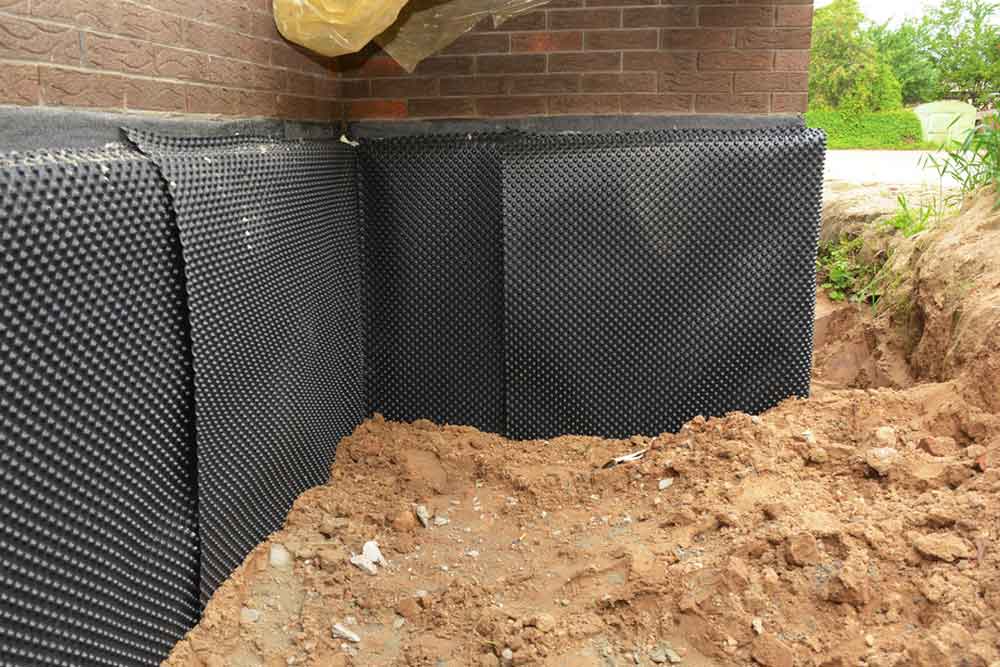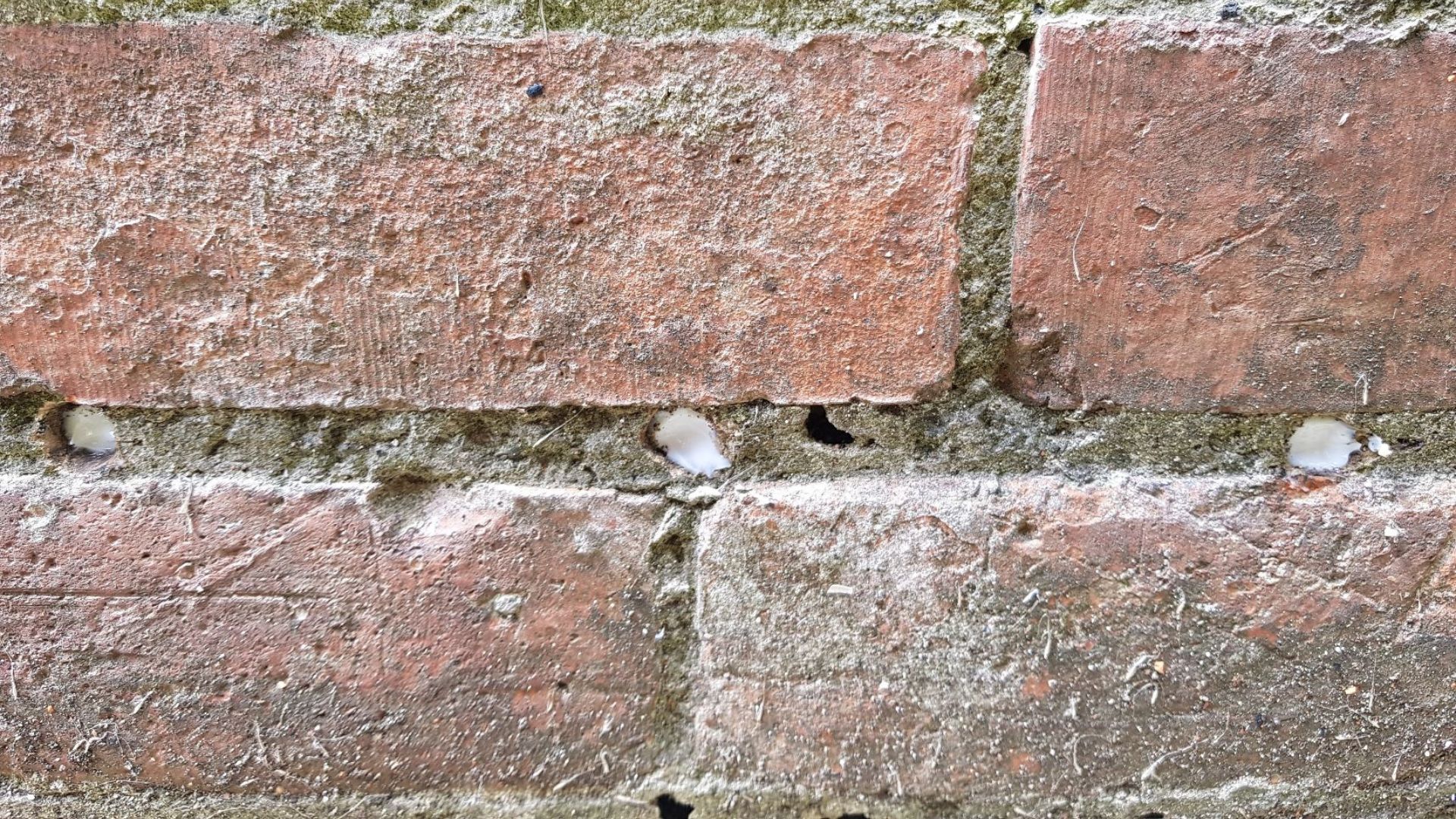Checking Out the Different Techniques and Solutions for Effective Damp Proofing
Moisture in structures presents considerable difficulties to both architectural integrity and interior air quality. Various methods and solutions have actually arised to fight this prevalent problem. From standard damp-proof membranes to cutting-edge chemical treatments, each method offers unique advantages. Recognizing these choices is necessary for reliable wetness control. Choosing the ideal service depends on details building problems and requirements, prompting additional exploration into the most effective damp proofing methods available.
Comprehending the Causes of Wetness
Although moisture can develop from different sources, understanding these reasons is essential for effective remediation. Typically, moisture stems from three main sources: rising wet, penetrating damp, and condensation. Increasing damp occurs when groundwater takes a trip up through permeable materials, such as brick or rock, frequently due to an absence of a reliable obstacle (damp proofing newcastle). Penetrating wet is usually caused by external variables, including roofing leakages, damaged rain gutters, or damaged wall surfaces, permitting water to infiltrate a residential or commercial property. Condensation, on the other hand, arises from excess wetness airborne, frequently intensified by bad air flow and temperature differences, leading to water beads creating on surface areas. Recognizing these underlying concerns is important, as each kind of moisture requires a customized method for remediation. Correct analysis helps in establishing one of the most reliable solutions, inevitably guarding the architectural stability of a building and boosting interior air top quality
Conventional Damp-Proof Membrane Layers

Chemical Damp-Proofing Solutions
Chemical damp-proofing services provide an innovative technique to protecting against wetness intrusion in buildings. These techniques commonly include the application of fluid chemicals that penetrate masonry and form an obstacle versus increasing wet. Generally used chemicals consist of silanes, siloxanes, and various other water-repellent agents that respond with surface area products to develop a hydrophobic layer.The application procedure usually needs exploration holes right into the wall surfaces, infusing the chemical solution, and allowing it to cure. This approach is particularly helpful for older structures where standard damp-proof membranes might be not practical. Chemical damp-proofing can be much less turbulent and a lot more cost-effective than considerable restoration projects.While effective, these services depend on appropriate application and ecological conditions for peak performance. damp removal newcastle. Regular upkeep and tracking are important to assure the durability of the damp-proofing treatment. In general, chemical damp-proofing represents a flexible alternative for securing structures against moisture-related damage
Cavity Wall Building Methods
Tooth cavity wall surface building strategies provide countless advantages, specifically in dampness control and power performance. By incorporating an air void between 2 layers of masonry, these wall surfaces successfully minimize water access while improving insulation. This mix not just secures frameworks from wetness yet likewise contributes to decreased energy consumption.
Benefits of Cavity Walls
When considering effective wet proofing approaches, the advantages of dental caries walls stand out plainly. Tooth cavity wall surfaces include 2 different layers, producing an air gap that successfully reduces wetness penetration. This style decreases the risk of wetness, as the external wall surface acts as an obstacle against rainfall and water ingress. In addition, cavity wall surfaces enhance thermal insulation, which adds to energy efficiency by lowering warmth loss. They additionally give sound insulation, helping to develop a quieter interior environment. The air gap permits for air flow, which assists in dampness control and lowers the likelihood of mold growth. These benefits not only improve the total comfort of a building however likewise add to its long life and architectural stability.
Wetness Control Methods
Efficient moisture control strategies are vital in tooth cavity wall surface construction to ensure lasting security versus wetness. One main technique involves the unification of weep openings, which assist in water drain from the dental caries, protecting against build-up. Additionally, using breathable membrane layers can help manage wetness degrees while permitting caught vapor to leave. Correct placement of insulation is also vital, as it needs to not block drainage paths. Furthermore, making certain that the external fallen leaves of the tooth cavity wall surface are constructed with water-resistant products boosts total toughness. Routine upkeep checks are essential to identify any kind of clogs or damages early, safeguarding the structure's honesty. Inevitably, a combination of these techniques develops a robust defense against wetness intrusion in tooth cavity walls.
Insulation and Power Efficiency
Insulation plays a crucial role in boosting click here energy effectiveness within cavity wall surface construction. By including protecting products, these walls develop a thermal obstacle that reduces heat loss and decreases energy usage. Efficient insulation not only assists preserve a steady interior temperature level yet also alleviates the risk of moisture, as it prevents condensation within the wall cavity. Different strategies, such as making use of inflexible foam boards or mineral wool, can be used to achieve perfect insulation efficiency. Furthermore, appropriate setup is vital to ensure that voids and spaces are minimized, which can or else compromise power efficiency. Inevitably, a well-insulated tooth cavity wall surface adds greatly to overall sustainability and reduces heating & cooling costs for property owners.
Outside Damp Proofing Approaches
External moist proofing techniques are essential for safeguarding frameworks from moisture seepage. 2 reliable techniques include the application of water resistant membrane layers and the setup of French drains pipes. These remedies assist reduce water buildup and preserve the honesty of buildings.
Waterproof Membrane Layer Application
While different methods exist for stopping moisture access, the application of water-proof membrane layers remains an extremely reliable exterior damp proofing strategy. These membrane layers are usually made from materials such as polyethylene, rubber, or modified bitumen, providing a robust barrier against water infiltration. The installment process entails using the membrane to the external surfaces of wall surfaces or structures, ensuring full coverage to stop leaks. Correct bond and securing at joints are vital to optimizing performance. Water resistant membrane layers can be used in numerous types, consisting of liquid finishings and sheet membranes, enabling adaptability based on the details needs of the structure. This technique not just protects buildings from wetness yet likewise improves their durability and structural integrity.
French Drain Setup
One effective approach for handling groundwater and avoiding moisture build-up around a building's structure is the setup of a French drain. This water drainage system includes a trench full of crushed rock and a perforated pipeline that reroutes surface water far from the structure. Appropriate installment calls for cautious preparation, ensuring that the drain slopes far from the structure to assist in optimal water flow. Furthermore, the area of the drain is crucial; it needs to be placed in areas vulnerable to merging or excess wetness. Regular maintenance, including cleaning debris from the gravel and guaranteeing the pipe continues to be unblocked, is essential for long-term performance. Inevitably, a well-installed French drainpipe can significantly minimize the threat of water-related issues in foundations and cellars.
Interior Waterproofing Approaches
Interior waterproofing methods are essential for protecting a building's inside from dampness infiltration and possible water damages. These approaches normally involve the application of customized materials and methods made to develop a dampness obstacle within the framework. One typical method is using waterproof layers or sealants on walls and floors, which prevent wetness from passing through surfaces.Additionally, setting up indoor water drainage systems, such as sump pumps, can successfully take care of water build-up in cellars and creep spaces. One more technique includes making use of vapor barriers, which are installed to prevent wetness activity from the ground into living spaces.Moreover, dealing with any type of fractures or gaps in wall surfaces or foundations with suitable sealants ensures a thorough protection against water breach. By executing these indoor waterproofing strategies, property owners can substantially reduce the danger of mold development, structural damages, and various other moisture-related issues. Proper execution of these strategies is essential for long-lasting defense and structure honesty.
Normal Maintenance and Examination Practices
Regular upkeep and evaluation techniques are essential for guaranteeing the lasting performance of damp proofing options in any building. Routine checks allow home proprietors to recognize early indicators of dampness invasion, such as peeling paint, mold development, and musty smells. These signs can signal underlying problems that require immediate attention.Inspections must be performed at the very least yearly, focusing on vulnerable areas like basements, creep areas, and outside wall surfaces. Throughout these assessments, homeowner should analyze sealers, drainage systems, and ventilation to confirm they work correctly.Additionally, preserving rain gutters and downspouts is essential, as stopped up systems can cause water accumulation near the foundation. Carrying out a routine upkeep routine, along with timely repair services, can substantially prolong the life-span of wet proofing procedures and protect the structural stability of the building. Positive actions inevitably contribute to the overall health and safety of the living environment.
Often Asked Inquiries
For How Long Does Damp Proofing Commonly Last?
The duration of moist proofing efficiency varies, typically lasting between 20 to half a century. Factors such as application quality, environmental conditions, and maintenance practices significantly affect the longevity of the moist proofing therapy.

Can I Damp Proof My Home Myself?
The specific considered the usefulness of do it yourself damp proofing. With proper research study and the best materials, it is possible. They likewise identified the significance of professional assistance to ensure long-lasting effectiveness and avoid future concerns.
What Are the Indicators of Ineffective Damp Proofing?
Indicators of ineffective moist proofing consist of relentless stuffy smells, visible mold and mildew development, peeling paint, wet spots on walls, and timber degeneration - mould treatment newcastle. Homeowners should resolve these concerns quickly to avoid more damages and wellness issues
Does Damp Proofing Affect Indoor Air Top Quality?

Exactly How Much Does Professional Damp Proofing Cost?
Expert damp proofing prices vary considerably, usually ranging from $1,000 to $5,000 depending upon the residential property's size, the extent of the moist concern, and picked methods. Each circumstance calls for a customized analysis for exact prices. Typically, dampness originates from 3 primary sources: increasing wet, permeating moist, and condensation. When considering reliable moist proofing methods, the benefits of cavity walls stand out prominently. Exterior moist proofing methods are important for protecting frameworks from wetness infiltration. While various approaches exist for avoiding moisture ingress, the application of water resistant membrane layers continues to be a very reliable outside wet proofing strategy. Signs of ineffective damp proofing include persistent moldy smells, visible mold development, peeling paint, wet patches on walls, and timber decay.
Comments on “The full process when you hire a mould treatment newcastle expert”